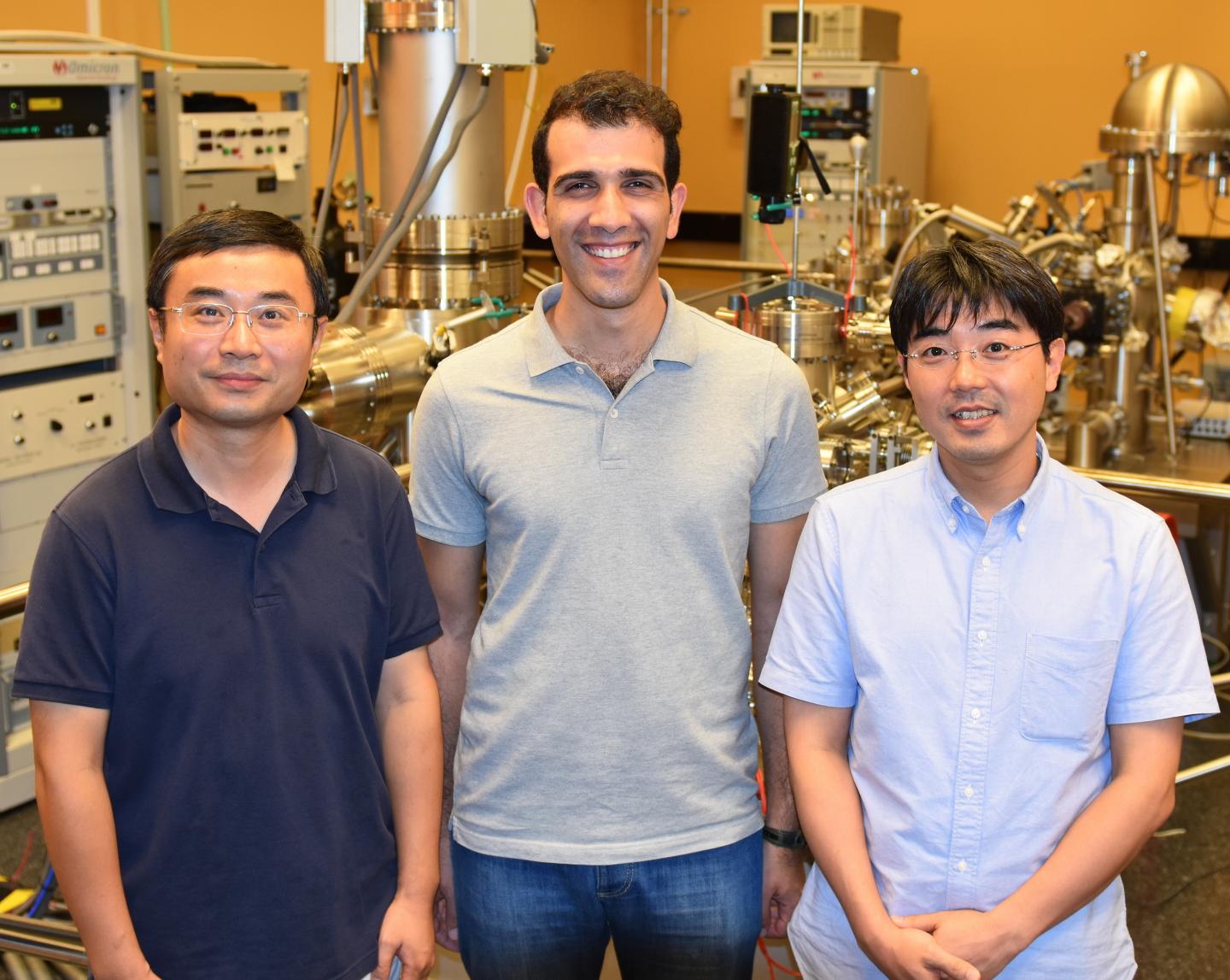
[Image above] Zafer Hawash from OIST setting up the hanging mercury drop electrode system for conductivity measurement. Credit: OIST
Solar cell technology has come a long way in the past ten years.
And when it comes to solar energy harvesting, perovskite solar cells could be the gold standard—if they weren’t so unstable.
Current perovskites have proven photophysical properties and power conversion efficiencies in excess of 20%, but they don’t stand up well to light, heat, and humidity. So researchers have accepted the challenge to develop something that trumps the status quo.
Some researchers are pairing perovskites with silicon to create higher-efficiency solar cells. Others are flipping a “chemical switch” during fabrication to improve perovskites’ thermal stability.
But what if researchers just have to add water to make perovskite solar cells swell with power?

Closeup of a perovskite solar cell. Credit: OIST
Scientists at the Okinawa Institute of Science and Technology (OIST) in Japan are delving deeper into what it is about the perovskite fabrication process that enhances effectiveness.
“Perovskite solar cells are usually exposed to ambient air for several hours after fabrication,” explains an OIST press release—a procedure that increases perovskites’ efficiency, though the reason for this hasn’t been clear.
“It’s intriguing. Why do we need ambient air to enhance the effectiveness of perovskite solar cells?” says Zafer Hawash, first author of the study and an OIST Ph.D. student, in the release. “Which component of the ambient air is linked to this phenomenon?”
Armed with these questions, the scientists focused on the top layer of perovskites—a logical choice, the team says, because the top-most layer is the one in direct contact with ambient air during fabrication and is most likely to be affected by the external environment. The top layer, also called the “hole transport layer,” contains a dopant that enhances electrical conductivity of the material, the release explains.

(Pictured from left) Yabing Qi, Zafer Hawash, and Luis K. Ono, from the OIST Energy Materials and Surface Sciences Unit. Credit: OIST
“It is known that the dopant of the hole transport layer plays a key role in perovskite solar cells’ performance,” adds Hawash. “But it was not clear how.”
The team exposed the hole transport layer to environmental gasses, particularly oxygen, nitrogen, and water vapor. Using several methods, they monitored electrical properties of the hole transport layer to determine if or how the layer changed post-exposure.
“What we found is that oxygen and nitrogen do not have any role in the redistribution of dopants,” Hawash explains. “But in the case of moisture, the solar cells’ efficiency increases. This is the discovery: Moisture is the air component that causes redistribution of dopant across the material, and thus enhancement of electric properties of the solar cells.”
The team explains that the hole transport layer has “many pinholes that allow passage of gasses between ambient air and the material underneath.” In this case, the dopant in the transport layer is salt (lithium TFSI), which has water-absorbing properties. And when the solar cells are exposed to moisture, water absorbed by the transport layer causes the dopant to redistribute, the release explains.
But exposure to moisture must be controlled—too much can be damaging.
During experimentation, the team also observed and documented the role of oxygen in perovskites’ performance.
“Oxygen enhances electrical conductivity of the transport layer as well, but this effect does not last long,” says Hawash. “But with the right amount of exposure to moisture, the electric proprieties are irreversibly enhanced.”
The team concluded that, somewhat counterintuitively, exposing perovskites to water during fabrication is the “most effective way to enhance the solar cells’ performance”—a development that could pave the way for efficient, stable, and scalable perovskites.
The study, published in Advanced Materials Interfaces, is “Moisture and oxygen enhance conductivity of LiTFSI-doped spiro-MeOTAD hole transport layer in perovskite solar cells” (DOI: 10.1002/admi.201600117).
